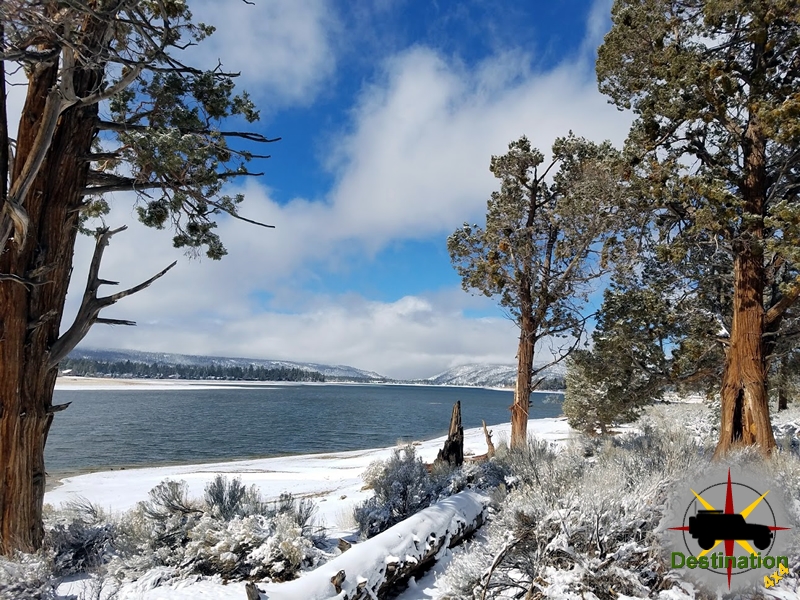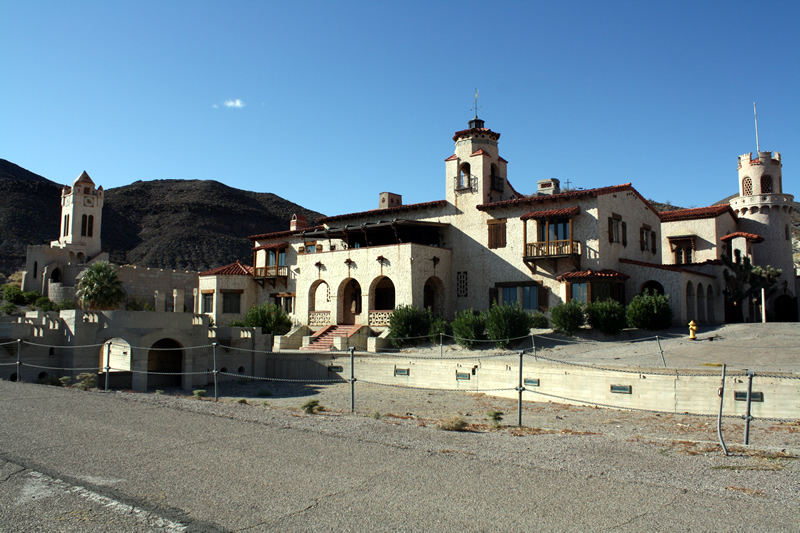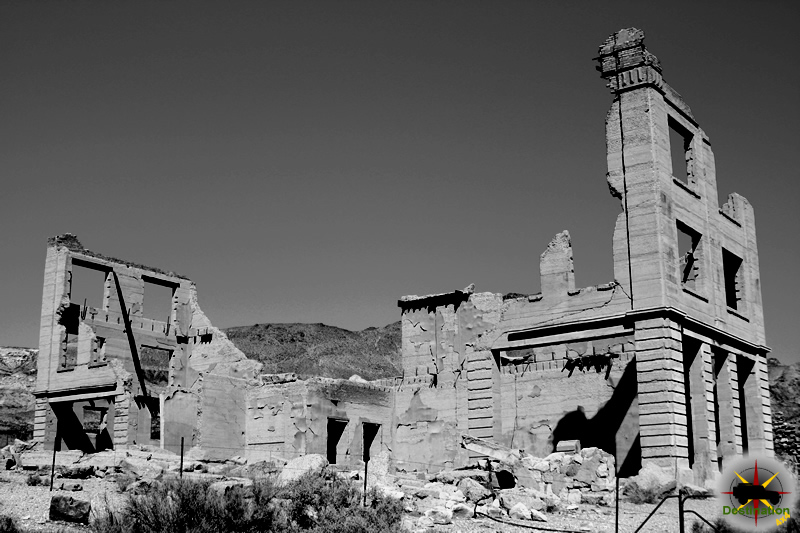
Aurora Nevada – Mineral County Ghost Town
Aurora, Nevada is a ghost town in Mineral County about twenty eight miles southwest of Hawthorne, near the California border. Aurora is often mentioned as a footnote to larger better preserved town on Bodie, CA located just a few miles away. Like most unprotected ghost towns today the town site is a just a remnant of its past, having lost much through heavy damage from vandals over the years.
The road leading into Aurora was once a 4×4 road and difficult to make it back into Aurora. Often the winter snows and spring rains rutted out the road leading to the town.

Aurora was founded in 1860 by J.M Corey, James N Braley, and E.R Hicks while prospecting south west towards Mono Lake. The “Eureka” moment came when gold and silver quartz was found while searching for water and game. Soon the word was out, and a migration of miners came up from Monoville and several other California towns. Like many boom towns, Auroras population reach about 1,400 by 1861 and just one year later was almost 6,000. Aurora boaster an 8 position stamp mill and the ore was hauled from the town via Wells, Fargo and Company. The town was constructed mainly from brick, as wood is a scare and finite resource in the area.

The Esmeralda Star was the town paper when the town reach is maximum population of 10,000. Life is town was rough and conditions were very harsh. The territories of both California and Nevada tried to lay claim to the newly prized Aurora and in the spring of 1861, Mono County was founded by California, which fixed the seat of the county in the little town of Aurora. Not to be outdown, in November of 1861, Nevada setup the head quarters of Esmeralda County in Aurora. This dual county seat arrangement lasted for two years during which time both California and Nevada maintained two different county and exercised jurisdiction concurrently.

To settle the issue, Nevada and California jointly commissioned a survey to finally settle the issue and established the location of the border. During the elections held in September 1863 Aurora had the distinction of voting in two elections. The Mono County voting was held in the police station and voters could walk over to Armory Hall to vote in the Esmeralda county elections for Nevada. Three weeks after the election, the survey results came in and Aurora was officially 4 miles inside the state of Nevada. The Mono County Officials loaded up their records and assets into Wagons and moved the seat to Bodie, CA some 10 miles to the south west.

1862 found a young Samuel Clemens (Mark Twain) in town for several months looking the make his fortune. During his stay he worked as a laborer in the stamp mill for $10 a week including board. The young Mr. Clemens quickly gave up mining and sent several lively sketches to the Territorial Enterprise located in Virginia City. Several weeks later Samual Clemens was hired by the Enterprise where he adopted his pen name, and Mark Twain was born.

In 1863 Aurora is pictured as a cluster of huts made of stone, sheltered by canvas or tin roofs, with streets of wooden buildings , and many substantial brick structures near the center of town, and uncountable tents and dugouts in the surrounding hils. About 5,000 persons lived in these makeshift shelters and in the 700 houses, and enjoyed the services provided by the hotels , churches, 20 stores, 22 saloons and 16 quartz mills .
National Register of Historic Places Inventory – Nomination Form – July 30, 1974
As with many gold towns, Aurora life was bright and short. Shallow mines could not support the town of 22 saloons and 20 stores and mismanagement and poor investments doomed the small town. There was virtually no family life in the town. Prostitutes made up over 50% of the female population and by 1870 the gold and silver was gone, and the town soon faltered officially closing the post office in 1897.
A resurgence of Aurora started in 1906 when mining resumed in the area. A post office was again opened to serve several hundred people, and a weekly called the Aurora Borealis was the paper of record. During the revitalization of Aurora, the Aurora Consolidated Mining Co. claimed 1.8 million dollars in gold during World War I. However, in 1919 the post office closed again and the town faded into history. After World War II much of the brick town was demolished to satisfy the demand for the used brick market in 1946.

The site of Aurora is all but gone and consisting of little more than a cross roads, a cemetery and a few foundations.
Aurora Town Summary
| Name | Aurora |
| Location | Mineral County, Nevada |
| Latitude, Longitude | 38.2871421, -118.9006963 |
| GNIS | 858760 |
| Elevation | 7400 feet |
| Post Office | – 1919 |
| Newpapers | Esmeralda Star May 17, July 5, Sept 20, 1862; Nov 18, Dec 30, 1863 Aurora Daily Times Nov 27, 28, 30, Dec 1, 9, 11, 12, 1863; July 11, Oct 7, 1864 Esmeralda Daily Union Mar 23, 1864 – Mar 15, 1865; Nov 27, 1867 – Oct 3, 1868 Esmeralda Herald Oct 20, 1877 – July 29, 1882; Aug 18, 1883 – Apr 19, 1884 Aurora Borealis Dec 3, 1905 |
Aurora Trail Map
Aurora Personalities
 Samuel Langhorne Clemens – “Mark Twain”Before he wrote American classic novels as Mark Twain, Samuel Langhorne Clemens was a miner and newpaper reporter in Mineral County, Nevada. Prior to picking… |
Further Reading
 Aurora, Nevada 1860-1960: Mining Camp, Frontier City, Ghost TownThis expanded Second Edition of Aurora, Nevada 1860-1960 chronicles the history of one of Nevada’s earliest and most important mining boomtowns. It is a reference-oriented… |
 Nevada Ghost Towns and Mining CampsNevada Ghost Towns and Mining Camps - By Stanley W. Paher Nevada Ghost Towns and Mining Camps is a wonderful book written by Stanley W.… |
Resources
Upper Antelope Canyon
Located just outside of Page, Arizona Upper Antelope Canyon is arguably the best known slot canyon on the planet, yet few people will know its name outside of desert enthusiasts. For those unaware of these structures, slot canyons are extremely narrow canyons, carved by water, which are typically just a few feet wide, but may be just a few inches. The typically arid dessert can instantly turn into raging torrent of water in just a few minutes with just a few inches of water. This water picks up speed, and debris such as sand, which scours the landscape including rock. Antelope Canyon is found on Navajo Tribal land, and access to the canyon is only allowed with a Navajo Guide.


Antelope Canyon is actually two separate slot canyons located a short distance from each other on either side of US 98. Upper Antelope Canyon is know as Tse’ bighanilini, which in Navajo means “the place where water runs through rocks.” Travel to the Canyon is done via Navajo run transport and you are allowed about 2 hours for your visit. The site is at about 4,000 feet elevation and the canyon walls rise 120 feet above a stream bed.
I would like to thank the LeChee Chapter of the Navajo Nation for keeping this location sacred and available to us.
James Rathbun, Destination4x4.com
Access into the upper canyon is simply a walking into a canyon. The trail is flat and sandy and very easy to manage. Upon entrance into the Upper Antelope Canyon you are immediately struck by the texture and color of this place. Just inside the entrance, is a small chamber which seems to great you, and the pink and orange glow of the light bouncing off the walls force your eyes up. The geography is such, that the narrow opening high above you lets in a small fraction of the available light, and that light bounces down towards the bottom of the canyon.
Relatively short, Upper Antelope Canyon may be traversed in just 5 minutes. However, this is simply a waste of your time if you just rush through. The only complaint of the canyon, are the other visitors. As a photographer, I have many photographs ruined by people turning a corner and walking into my frame while I was making an exposure. This does not mean they were rude or anything but patient, but rather an unfortunate side effect of composing photographs with long exposure times in a 18 inch wide slot Canyon.

As with all beautiful things, we must share this location and Antelope Canyon is a must stop location every time I visit the area. There is a hidden danger, in that the very forces which sculpt a slot canyon are still very much in play and every few years a new story will appear about someone being killed in a slot canyon due to a sudden flash flood.
I would like to thank the LeChee Chapter of the Navajo Nation for keeping this location sacred and available to us.
Upper Antelope Canyon Map
Goblin Valley Utah

Goblin Valley is located in Utah is a state park and campground which is adjacent to eroded flood plain. Formed by water, time and a soft sandstone, erosion sculpted the limestone into unique rock formations which some have stated appears to be goblins. The Goblin Valley itself is a day use hiking area which allows one to get lost in the maze of spires and rock formations.

Each rock spire ranges in height from 3 feet to about 20 feet tall. The fragile structures litter the landscape and sadly on occasion have been felled by people who do not have respect for nature. There are three established self, however the Valley of the Goblins is a open trail flat mud plane after a easy and short trail down from the parking area.
Goblin Valley State Park does offer an established campground of 22 campsites just over a hill from the Valley of the Goblins. The campground features, paved sites, bathrooms, showers, water and dump stations. The campground is very popular destination due to location next to Goblin Valley and is also a wonderful centralized base camp location for exploring the San Rafael Swell.

We stated in Goblin Valley in the off season several years ago. We were greeted with lots of camp sites available, privacy and a minor wind and rain storm. Despite the less then desirable conditions, we enjoyed our stay and will try to make it back again in the future.
Continue Reading →Antelope Valley California Poppy Reserve

Established in 1976, the Antelope Valley California Poppy Reserve is located just west of Mojave and boasts the most consistent blooms that the California Poppy. The reserve does not plant or water the flowers, so the timing and abundance of the flowers is solely dependent upon rainfall each year. The bloom season begins late winter and may last throughout the spring depending upon conditions. In addition to the poppy, the Reserve also hosts a variety of species including Owl’s Clover, Davy Gilia, Goldfields, Lupine and Cream Cups.
The 1745 acre flower reserve ranges in elevation frim 2600 to 3000 feet in elevations and boasts 7 miles of trails. There are limited facilities, but the reserve does have some wheel chair access.

The California Poppy ( Eschscholzia californica ) is a small perennial is typically a short flowering planet which boasts a vibrant orange bloom. The flower itself grows on top of a sledder stalk and the four petal flower which has a silky texture, appears extremely delicate and vulnerable to the elements. The flowers open each morning and close in the evening with the cooler air.

The California Poppy has a large range which included more of California, parts of Oregon, Washington, Nevada, Arizona and Northern Baja California.
Antelope Valley California Poppy Reserve Map
Racetrack Valley

Racetrack valley is a rough graded road which departs the Ubehebe Crater site and heads south into the desert. The road is rough, but easily passable in a regular car. However, when entering back country areas such as this it is always a good idea to have the insurance of a reliable vehicle, high clearance, four wheel drive, etc… Do yourself a huge favor and air down your tires if you are properly equipped to air up when the trip is over.

The racetrack valley road is a 25 miles one way trip to the playa. The road is grated, but can be heavily wash-boarded depending on the time of year, rain fall, etc…
Along the way, there are many side trips and alternate trails to help expand your visit.
As you leave Ubehebe Crater, you will be driving south and gradually gaining elevation. Take your time and enjoy the drive, if you are lucky you may see a big horn sheep herd. The road gradually gains in elevation and climbs through a Joshua Tree Forest.
Once you reach the pass, the road continues to drop in elevation all the way down to the playa. Continue straight through tea kettle junction, and bear left down the valley past the side road to the Lippincott mine, which is a great side trail.

As you continue past the road to the Lippincott mine the road drops down to the Racetrack Playa itself. The first stop is ‘The Grandstand’ which is an outcropping of rock located in the north west corner of the racetrack. The second stop is the parking area to hike towards the stones. Don’t try to hike to the stones from the first Grandstand parking lot, or you will be hiking significantly further.
The highlight of the trip, is a short hike to the sailing or racing stones. The start of the hike is the parking area at the southern end of the racetrack playa.
To reach the stones hike east from the parking lot across the playa towards the dark stone hillside. It is short FLAT, meaning really FLAT hike towards the stones. Be sure the check the temperatures before you leave, and bring lots of water. This is true with anything you might want to do in Death Valley. Don’t walk on the playa if it is wet or muddy.

At the end of the 30 miles road there is a small primitive campground for overnight visits. Be sure to check with the National Park Service for regulations of back country camping within the park.

Notoriety
On September 19th, 1969 a Michigan front end loading is found burning along the road near the playa. Apparently, Manson order the machine burned. Park Rangers were deployed to the Racetrack. The rangers followed a set of tire tracked which belonged to a Toyota Land Cruiser which was stolen by Manson. The follow up investigate lead to the arrest of Charles Manson at Barker Ranch on October 12th, 1969.



